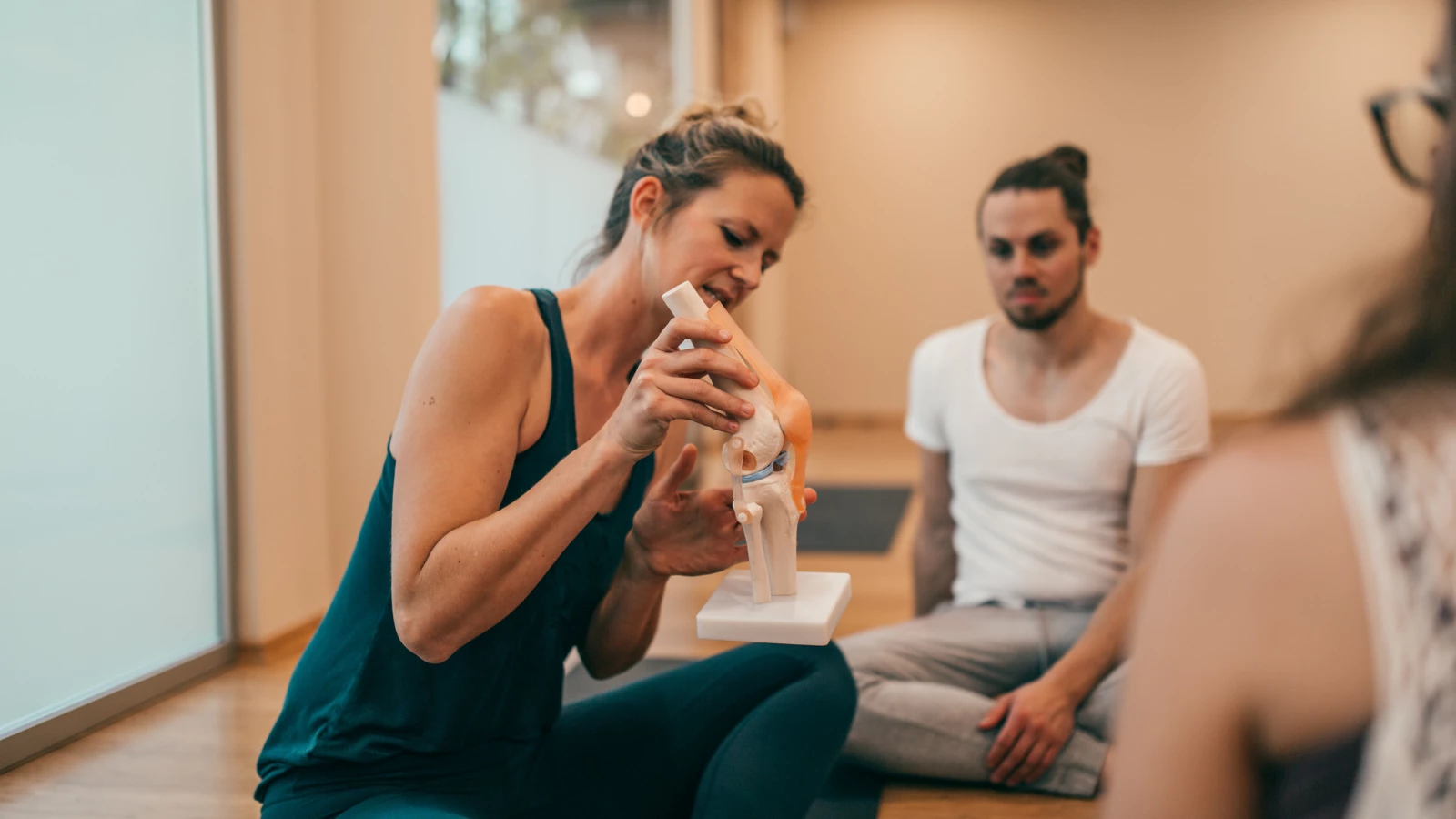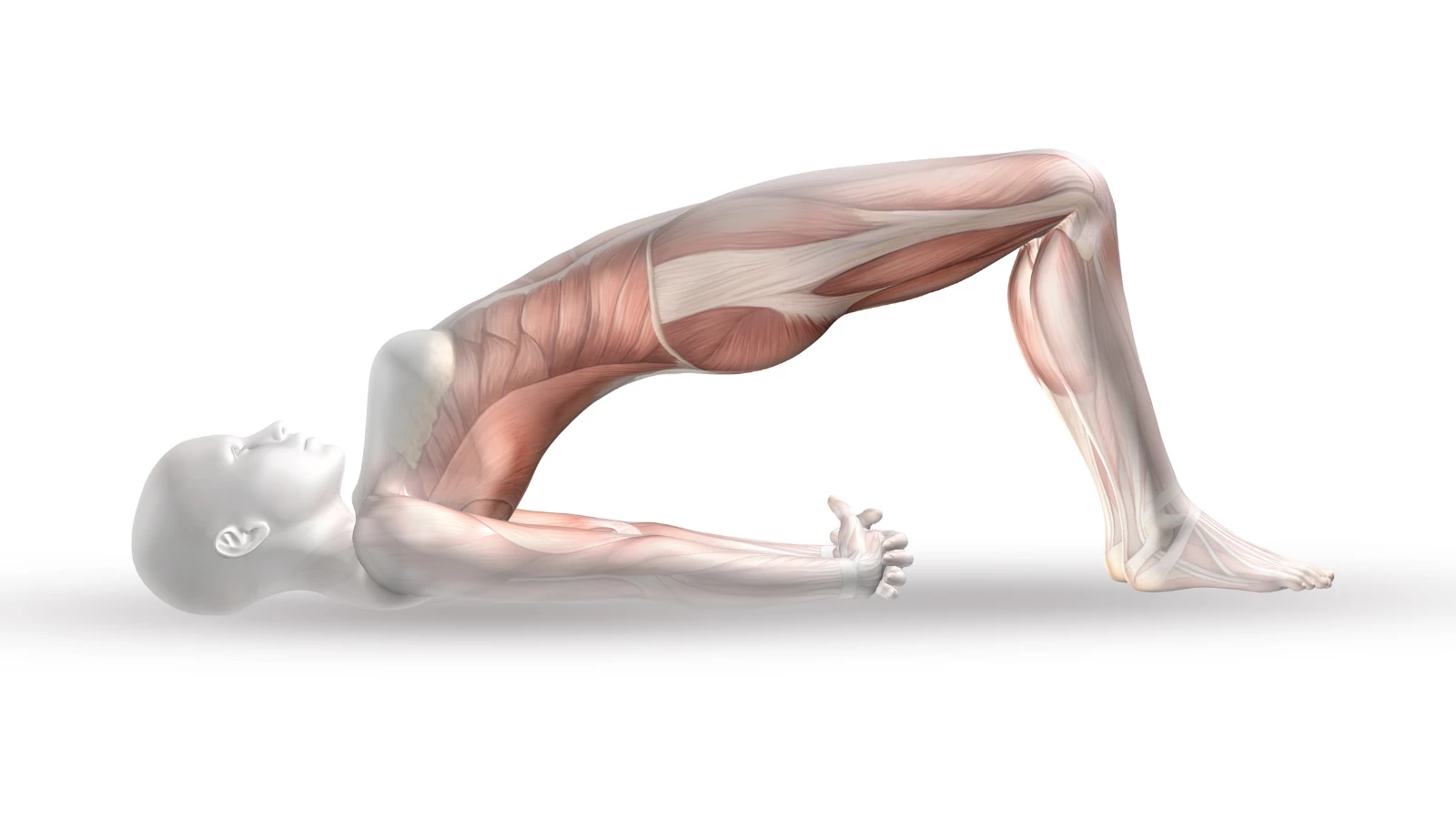A Blueprint for Learning Anatomy for Yoga Teaching

When budding yoga teachers try to learn anatomy as part of their training, often what they experience is a feeling of overwhelm. Even for those that have a background in science, applying anatomy for yoga is a unique exercise, one that requires an understanding of anatomy as well as how to apply that knowledge to movement.
Teacher trainings have requirements as to how much anatomy should be included. But the process for sharing it varies from training to training. As such, teachers sometimes leave their basic training with only a cursory understanding of anatomy. Things are further complicated by the challenge to fit it all in. With so much to learn, teacher trainees often experience overload after learning a great deal of information shared in a short time.
Additionally, the topic is just so broad. Identifying the key elements to focus on is critical to helping teachers learn this complex subject.
Most yoga teachers agree that understanding anatomy is really important. Even if a teacher’s focus is on the spiritual side of the practice, providing cues in asana practice requires that we understand the parts of the body; how they work collaboratively to produce movement; and even more important, how to assist students who are injured or might require modifications in their poses.
How to Make Learning Anatomy for Yoga Easy

In the over 10 years I’ve been leading anatomy trainings, I’ve devised a blueprint for learning anatomy. This step-by-step process promotes learning at a pace that allows for an understanding of each step. Because each step builds the necessary knowledge for the one that follows, it cuts overwhelm.
The blueprint is targeted at understanding anatomy for yoga teaching. While it seems obvious it is worth noting that many trainings and educational materials for teachers go deep into subjects that have little relevance to the main thing they’ll be doing: moving people through a sequence on the yoga mat. While having deep knowledge can be helpful, it’s not critical. For such a broad subject with lots of complex parts, it’s important we focus on the key things to make learning it more reasonable.
How to Learn Anatomy for Yoga in 10 Key Steps
- Get down to basics. This means outlining why you want to learn anatomy for yoga in the first place. While it seems obvious, identifying your goal from the start is key.
- Dive into how we apply anatomy to yoga. This would include identifying things like “anatomical position” and why that’s a central part of learning anatomy for yoga.
- Identify the key parts of the body you’ll study. There are many parts of the body’s infrastructure. It’s important we look at just what parts we’ll study.
- Look at muscles in poses. This is where things start to get real. We take our knowledge from the above step (the parts, including muscles) and we look at muscles at work within yoga poses.

- Identify ways to share anatomy with your students. This is where the rubber meets the road. This is the time to apply what we know by sharing anatomy. We can cite the cues we use and the supporting information that comes from our knowledge of anatomy.
- Help your students by providing them with corrective cues to get them out of “red flag” alignment. With your new anatomy knowledge, you’ll be better able to distinguish between things you can overlook and actions on the mat that you need to address with corrective cues.
- Help your students by offering them other ways to practice the poses. Modifying poses is more than just making poses easier to do. It’s a way to focus on different things. As we learn anatomy, we can learn how to change up poses so that they fit in with different anatomy lessons or themes we’re bringing into class.

- Create anatomy-based themes that you can share in your sequencing. It’s really fun once you build a solid foundation of anatomy knowledge because then you’re able to build sequences that have different themes. One example would be a class focused on opening the front line of the body since students in our afternoon and evening classes have likely been sitting, hunched over their desks, all day.
- Provide cues that are clear and correct. The variety in cues is significant, as each teacher expresses their teaching in different ways. This is wonderful and speaks to each teacher’s authenticity. However, anatomy-based cues should be correct. Once you build your anatomy knowledge, you’ll never have to wonder if what you heard in another class is right. And you’ll never feel as if you’re just repeating a cue you heard without knowing if it’s correct.
- Learn an important technique in self-care that is central to anatomy, myofascial release. Fascia, the connective tissue that runs throughout the body, is one of the key structures it’s important to understand. Myofascial release keeps fascia healthy by releasing tension in tight areas. While this is a potential workshop topic and might not be a technique you’d teach in a regular class, understanding more about it is helpful for developing a solid understanding of anatomy.
Also, read...
Discovering the Living Body: A Yoga Teacher’s Revolutionary Insight on Fascia
The Fascia Connection: Tom Myers on How Postural Habits Get Locked into Our Fascial System
Axial Extension for Better Posture- Learning to Lengthen the Torso in Forward Bends
Related courses

Karen Fabian a Yoga teacher, Author, and Founder of Bare Bones Yoga, Karen Fabian, has a background in rehabilitative medicine and healthcare. Her passion for anatomy and human movement is behind all she does, including her work with yoga teachers inside her program, The Yoga Anatomy Blueprint Learning Program. She also earned her Certified Personal Trainer certification in 2017 and Corrective Exercise certification in 2019 with the National Association of Sports Medicine to deepen her knowledge of human movement.
Her books include “Stretched: Build Your Yoga Business, Grow Your Teaching Techniques,” “Structure and Spirit,” e-books called “Key Aspects of Anatomy for Yoga Teachers,” and “Understanding the Why Behind the Cues.” She also has authored her own anatomy manual used in her online and live training.
Karen has her B.S. in Rehabilitation Counseling from Boston University and her Master’s in Health Care Administration from Simmons College. She is an Experienced Registered Yoga Teacher, a Yoga Alliance Continuing Education Provider, and was one of the first Certified Baptiste Yoga Teachers.
She has been teaching since 2002 and lives in Boston.



